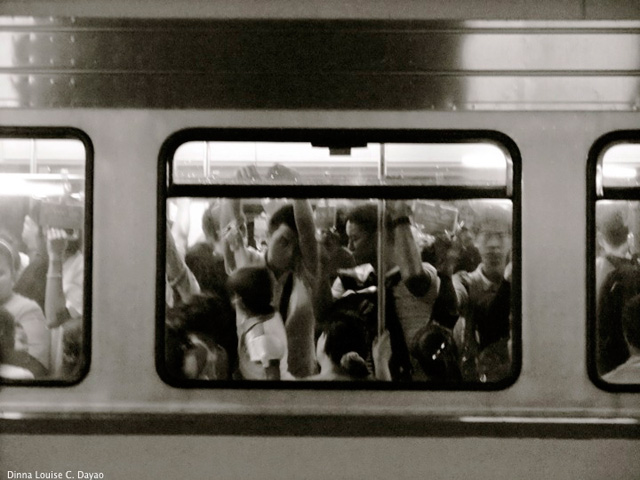SUMMARY
This is AI generated summarization, which may have errors. For context, always refer to the full article.

MANILA, Philippines (UPDATED) – Quick! Can you name a Filipino public servant who regularly takes public transit?
Stumped? Ok, here are two answers: Naderev Saño frequently takes the train from Katipunan to Pureza; the climate change commissioner then hops on a jeep to get to his office in Malacañang. Congresswoman Leni Robredo rides the bus as she shuttles between Manila and Naga City.
Filipino officials who regularly take public transportation, like Saño and Robredo, are rare. Most officials prefer to travel by car.
As a result, they do not face the daily realities of 80% of the people in Metro Manila; 8 out of 10 people in the metropolis take public transportation. Public transit riders include children, the elderly, and persons with disabilities.
Filipino officials who are cocooned in their cars fail to understand the plight of public transit riders, who make up the majority of the citizens they purport to serve:
- These officials need not squeeze into jam-packed trains and rickety buses and jeeps. They do not endure long lines and travel times.
- They do not suffer from the lack of facilities that would make it easier for transit riders to get from point A to point B. These facilities include comfortable bus, jeep, and train stops, wide sidewalks, and well-designed walkways that connect the different modes of transport.
- They do not know what it’s like to risk life and limb every time they get on a public utility vehicle. According to one study, the bus is the unsafest of all the public utility vehicles in Metro Manila; it is the vehicle most likely to get involved in a road crash or collision.
Traffic congestion
Traffic is the only problem car-riding officials face. It’s no wonder, then, that they focus on “curing traffic congestion rather than improving public transportation,” says urban planner Benjamin de la Peña in an editorial.
“Every flyover and every underpass we’ve built in Metro Manila – all in all costing billions and billions of pesos – was meant to solve traffic congestion,” says de la Peña. “None of it works and none of it will work because focusing on the needs of the 20% (who ride cars) and ignoring the 80% (who depend on public transportation) is insane.”
Calling on Filipino public servants: You can do something, right here and right now, to end this insanity. Get on the bus or train!
Take this poll: Which public official would you like to see regularly on the bus or train? Please vote and click on the face of your chosen official. Hover over the select faces and see their names.
Your replies may be featured in a future column. Thank you for your time. – Rappler.com
Editor’s Note: An earlier version of this story mistakenly listed the name of the DOTC Secretary as “Peter” Abaya. This has been corrected. The DOTC Secretary is Joseph Emilio “Jun” Abaya.
A writer and editor, the author organized the Change.org petition asking President Aquino to require all public officials to take public transit at least once a month. You can reach her at dinnadayao@gmail.com.
Read the second part here: Leaders in other countries who take public transportation – and how our public officials can learn from them.
Add a comment
How does this make you feel?
There are no comments yet. Add your comment to start the conversation.